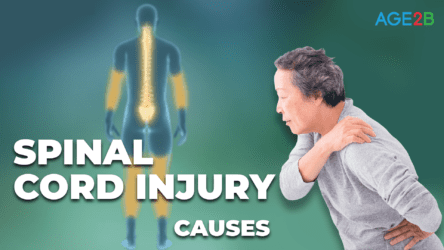What is low back pain?
Low back pain is discomfort in the lumbar or lower portion of the back. It can be related to problems with the lumbar spine, the intervertebral discs that are located between the vertebrae, the spinal cord or nerves, the muscles or ligaments of the spine, the internal organs of the abdomen or pelvis, or it can be related to problems with the skin that covers the low back. Pain in the lower right back is a very common problem. More than half of all people will experience at least one episode of severe pain in lower right back at some time during their life.
Pain in the lower right back can have symptoms that vary. Sometimes the symptoms include a dull, aching pain. Other times the pain may travel or radiate down the hip and into the back of the thigh and lower leg. Some people notice numbness or a tingling sensation in their leg while other people describe a sense of burning.
Causes of Pain in Lower Right Back
Many different problems can cause pain in the right lower region of the back. Treating pain in lower right back has one of its primary goals, a diagnosis of the cause of the pain. Sometimes the cause of the pain is a simple strain or an injury due to overuse, while other causes are more serious and can be life-threatening. It is recommended to seek medical care for severe back pain so a physician can perform a thorough examination and rule out potentially serious conditions.
Lower Back Strain
A group of ligaments and muscles are located on the back that supports and provide movement to the spinal column. These run the length of the spine. If you stretch too far or exercise too much, you can strain these tissues. Even small injuries can cause significant pain in lower right back. Falls, excessive twisting or bending, or lifting can also cause back strain. Lack of muscle strength in the core of the body and obesity contribute to strains of the low back.
A low back strain is typically described as soreness and stiffness that intensifies with movement, laughing, coughing and sneezing. It can occur on both sides of the back or only on one side.
Treating a low back strain starts with applying an ice pack to the affected area several times a day for about 20 minutes each time. Over-the-counter analgesics like naproxen, ibuprofen or acetaminophen can help lessen the pain in lower right back. Sometimes, a physician will recommend physical therapy if a back strain is not getting better on its own.
Pregnancy
One-sided low back pain is a common problem during pregnancy. This happens for several reasons. As the baby grows, the uterus can press on nerves, such as the sciatic nerve. Compression of the sciatic nerve typically causes pain in lower right back and buttocks that radiates down the leg. Changes in hormonal levels also soften ligaments, creating more stress on the pelvis and lower back. The extra weight of the mother and the baby complicate the problem even more.
To help minimize pain in lower right back during pregnancy, try these tips:
- Maintain good posture: This will keep your center of gravity where it belongs and strengthen your core muscles
- Change your position often
- Wear only flat-soled shoes
- When lying down, rest on your side with a pillow between your knees
- Maintain your physical activity
Herniated Disc and Sciatica

Kidney Infection
Infections of the kidney can cause severe and serious pain in the lower right back that is located on one or both sides of the lower back. Kidney infection typically starts in the bladder before traveling up into the kidneys where it creates inflammation, swelling, and severe pain. Nausea and fever can also accompany kidney infection
Kidney Stones
Spinal Stenosis
Prevention
You can reduce your risk of developing low back pain by taking the following steps:
- Exercise: Exercise helps to build your strength and it also helps keep your weight under control. Low-impact aerobic activities are recommended by most experts because these are least likely to jerk or strain the tissues of the back. Core-strengthening exercises are excellent for your back also. These exercises will train your back and abdominal which protects your back. Flexibility exercises that are targeted specifically at improving the flexibility in your upper legs and hips will help your lower back too. Before you start any exercise routine, talk to your healthcare practitioner.
- Smoking: Smoking significantly increases your risk of suffering from pain in the lower right back. If you smoke, try to stop. If you don’t smoke yourself, avoid second-hand smoke.
- Body weight: The more above your ideal weight you are, the greater your chance of having pain in your back. There is a significant difference in pain in lower right back has to risk among normal-weight individuals and those who are obese.
- Sitting Posture: Your chair needs to provide support for your back, rests for your arms and, if you’re working, your chair should swivel. Keep your feet flat, or use a small footstool. You should be able to sit straight up. If you’re typing or using a keyboard, your forearms should be in a straight horizontal line and your elbows at right angles.















Leave a Reply
You must be logged in to post a comment.